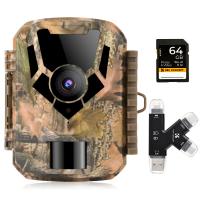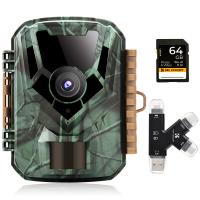How Do You Format A Micro Sd Card?
Formatting a microSD card is a common task that many users need to perform for various reasons, such as preparing the card for use in a new device, clearing data, or resolving file system errors. This article will guide you through the process of formatting a microSD card on different platforms, including Windows, macOS, Android, and using a camera or other device. By the end of this article, you will have a comprehensive understanding of how to format a microSD card safely and effectively.
Understanding the Basics of Formatting

Before diving into the step-by-step instructions, it’s important to understand what formatting a microSD card entails. Formatting is the process of preparing a storage device, such as a microSD card, for use by an operating system. This involves setting up a file system that the operating system can recognize and use to store and retrieve data. Common file systems include FAT32, exFAT, and NTFS.
Why Format a microSD Card?
1. To Clear Data: Formatting erases all data on the card, making it a quick way to clear all files.
2. To Change the File System: Different devices may require different file systems. For example, some cameras may require FAT32, while others may work better with exFAT.
3. To Fix Errors: If the card is corrupted or experiencing errors, formatting can often resolve these issues.
4. To Optimize Performance: Regular formatting can help maintain the card’s performance by clearing out fragmented data.
Formatting a microSD Card on Windows

1. Insert the microSD Card:
- Use an SD card adapter if necessary and insert the microSD card into your computer’s card reader.
2. Open File Explorer:
- Press `Win + E` to open File Explorer and locate the microSD card under “This PC” or “My Computer.”
3. Right-Click and Select Format:
- Right-click on the microSD card and select “Format” from the context menu.
4. Choose File System:
- In the Format window, choose the desired file system (FAT32, exFAT, or NTFS). For most purposes, FAT32 or exFAT is recommended.
5. Quick Format:
- Check the “Quick Format” option if you want a faster format. Uncheck it for a more thorough format.
6. Start Formatting:
- Click “Start” to begin the formatting process. A warning will appear indicating that all data will be erased. Confirm to proceed.
Formatting a microSD Card on macOS

1. Insert the microSD Card:
- Use an SD card adapter if necessary and insert the microSD card into your Mac’s card reader.
2. Open Disk Utility:
- Go to `Applications > Utilities > Disk Utility`.
3. Select the microSD Card:
- In Disk Utility, select the microSD card from the list of drives on the left.
4. Erase the Card:
- Click the “Erase” button at the top of the window.
5. Choose Format:
- In the Erase window, choose the desired file system (usually MS-DOS (FAT) for FAT32 or ExFAT for exFAT).
6. Name the Card:
- Enter a name for the microSD card if desired.
7. Erase:
- Click “Erase” to begin the formatting process. Confirm any warnings that appear.
Formatting a microSD Card on Android

1. Insert the microSD Card:
- Insert the microSD card into your Android device’s card slot.
2. Open Settings:
- Go to the device’s Settings menu.
3. Storage:
- Navigate to `Storage` or `Device Care > Storage`.
4. Select the microSD Card:
- Find the microSD card in the list of storage options and select it.
5. Format:
- Tap on “Format” or “Format SD card.” Confirm any warnings that appear.
Formatting a microSD Card Using a Camera or Other Device
1. Insert the microSD Card:
- Insert the microSD card into the device’s card slot.
2. Access Settings:
- Navigate to the device’s settings menu. This process varies by device, so refer to the user manual if necessary.
3. Find Format Option:
- Look for an option to format the card. This is often found under `Storage` or `Memory` settings.
4. Format:
- Select the format option and confirm any warnings that appear.
Tips for Formatting microSD Cards
1. Backup Data:
- Always back up any important data before formatting, as the process will erase all files on the card.
2. Use the Right File System:
- Choose the file system that is compatible with your device. FAT32 is widely supported but has a 4GB file size limit. exFAT supports larger files and is suitable for newer devices.
3. Regular Maintenance:
- Regularly format your microSD card to maintain optimal performance and prevent file corruption.
4. Check for Errors:
- If you encounter errors during formatting, try using a different card reader or device. Sometimes, the issue may be with the reader rather than the card itself.
Formatting a microSD card is a straightforward process that can be done on various platforms, including Windows, macOS, Android, and directly on devices like cameras. By following the steps outlined in this article, you can ensure that your microSD card is properly formatted and ready for use. Remember to back up your data before formatting and choose the appropriate file system for your needs. Regularly formatting your microSD card can help maintain its performance and longevity, ensuring that it continues to serve you well in storing and transferring data.











There are no comments for this blog.